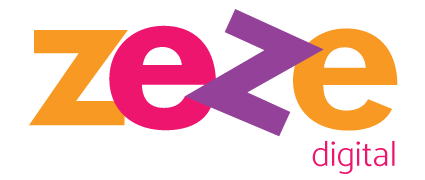In the intricate dance of marketing, success hinges on understanding and connecting with the right audience. Marketing agencies serve as navigators in this journey, employing sophisticated techniques to identify target audiences and segments with precision. Let’s explore why identifying target audiences and segments is crucial in the realm of marketing agencies and how it lays the groundwork for impactful campaigns and sustainable growth.
The Significance of Audience Understanding: Effective marketing begins with a deep understanding of the target audience. Marketing agencies recognize that no two consumers are alike, and understanding their needs, preferences, and behaviors is paramount to crafting compelling messages and experiences. By delving into the psyche of the audience, agencies unearth valuable insights that inform strategic decision-making and campaign execution.
Audience Segmentation: Not all consumers are created equal, and audience segmentation is the key to unlocking the potential of diverse consumer groups. Marketing agencies employ segmentation techniques to categorize audiences based on common characteristics such as demographics, psychographics, behavior, and preferences. By segmenting audiences into distinct groups, agencies can tailor marketing messages, offers, and experiences to resonate with each segment’s unique needs and motivations.
Persona Development: Persona development is a cornerstone of audience understanding in marketing agencies. Personas are fictional representations of target audience segments, incorporating details such as age, gender, occupation, interests, and pain points. Marketing agencies create personas through in-depth research and analysis, drawing insights from market research, customer surveys, and interviews. By humanizing the target audience, personas enable agencies to empathize with their customers and create personalized marketing strategies that drive engagement and conversion.
Data-Driven Insights: In the age of big data, insights are the currency of effective marketing. Marketing agencies leverage data from various sources, including customer interactions, website analytics, social media engagement, and market research, to glean valuable insights into audience behavior and preferences. Advanced analytics tools and methodologies enable agencies to analyze vast datasets, uncover patterns, and identify actionable insights that inform audience segmentation and targeting strategies.
Behavioral Targeting: Behavioral targeting is a powerful technique used by marketing agencies to reach audiences based on their online behaviors and interactions. By tracking user activities such as browsing history, search queries, and content consumption, agencies can infer intent and target audiences with relevant messaging and offers. Behavioral targeting enables agencies to deliver personalized experiences that resonate with individual audience members, driving higher engagement and conversion rates.
Geographic Targeting: Geographic targeting is another dimension of audience segmentation used by marketing agencies to reach audiences based on their location. Whether targeting customers in a specific city, region, or country, agencies can tailor marketing campaigns to local preferences, cultural nuances, and market dynamics. Geographic targeting enables agencies to optimize marketing efforts, minimize waste, and maximize ROI by focusing resources on high-potential markets.
Multichannel Approach: Marketing agencies recognize that today’s consumers engage with brands across multiple channels and touchpoints. As such, they employ a multichannel approach to reach target audiences wherever they may be. From social media and email marketing to content marketing and digital advertising, agencies orchestrate integrated campaigns that deliver consistent messaging and experiences across channels, ensuring maximum impact and engagement.
Continuous Optimization: Identifying target audiences and segments is not a one-time effort—it’s an ongoing process of continuous optimization. Marketing agencies monitor audience behavior, track campaign performance, and gather feedback to refine audience segments and targeting strategies over time. By staying agile and adaptive, agencies ensure that their clients’ marketing efforts remain relevant and resonate with evolving audience preferences and trends.
In conclusion, identifying target audiences and segments is the cornerstone of effective marketing in agencies. By understanding audience needs, segmenting audiences based on common characteristics, developing personas, leveraging data-driven insights, employing behavioral and geographic targeting, adopting a multichannel approach, and continuously optimizing strategies, agencies empower their clients to connect with the right audience at the right time with the right message. In an increasingly competitive and dynamic marketplace, the ability to identify and engage target audiences effectively is what sets top-performing marketing agencies apart and drives sustainable growth for their clients.
